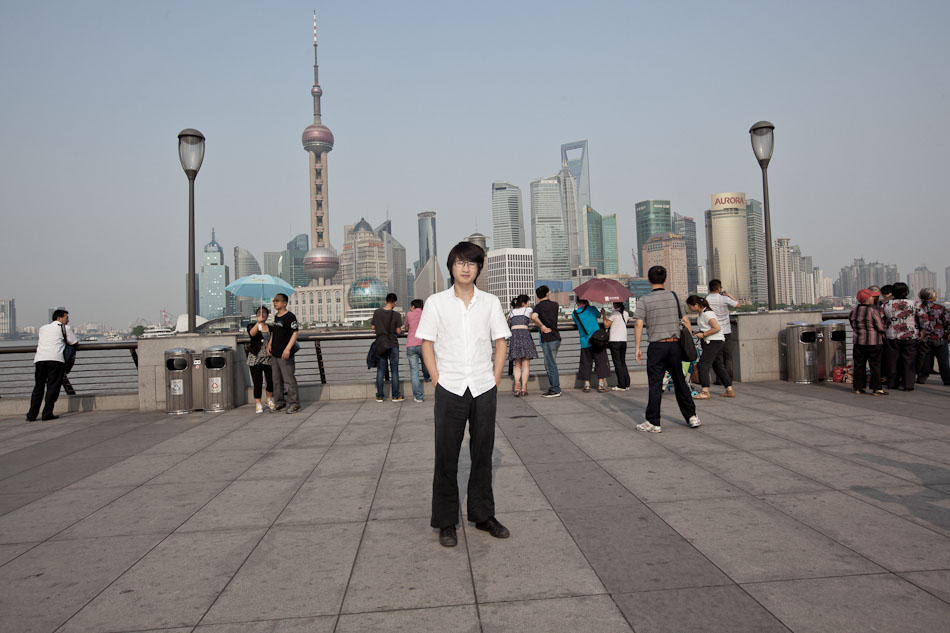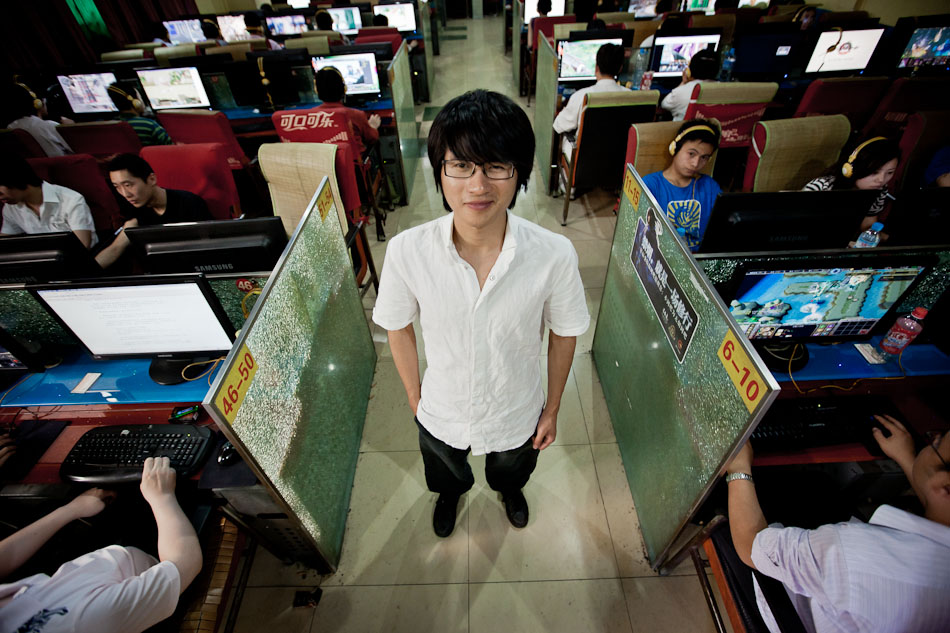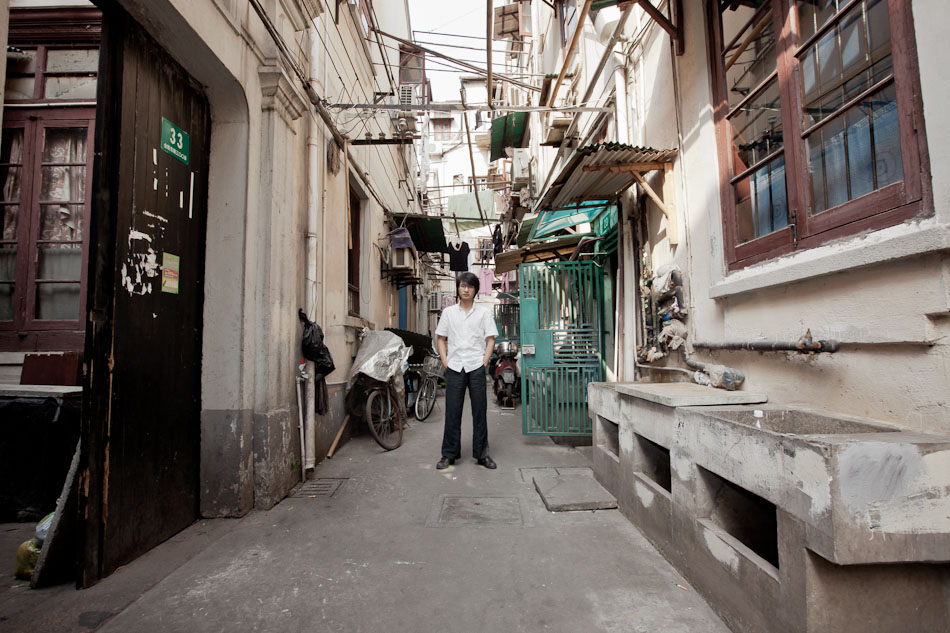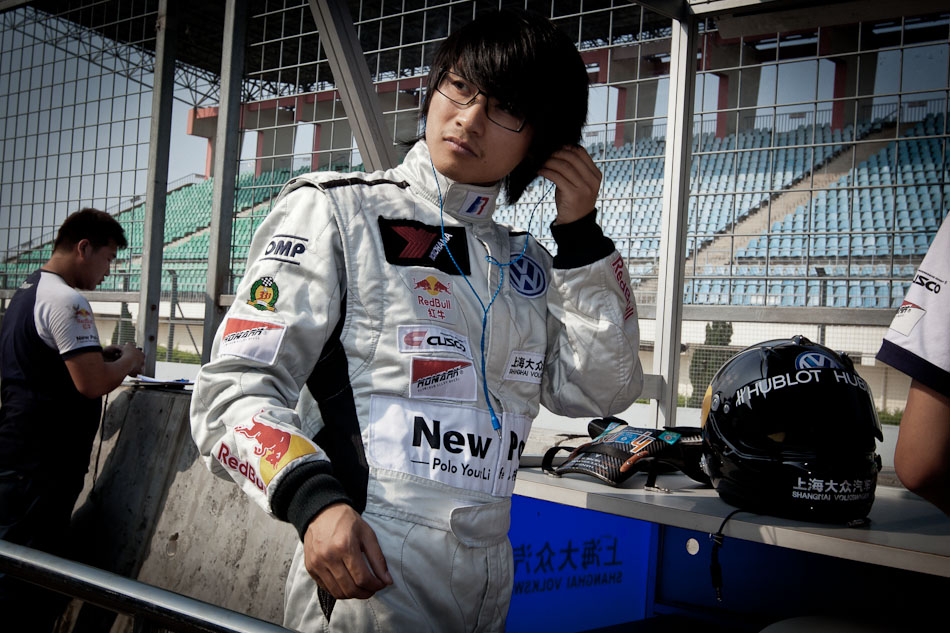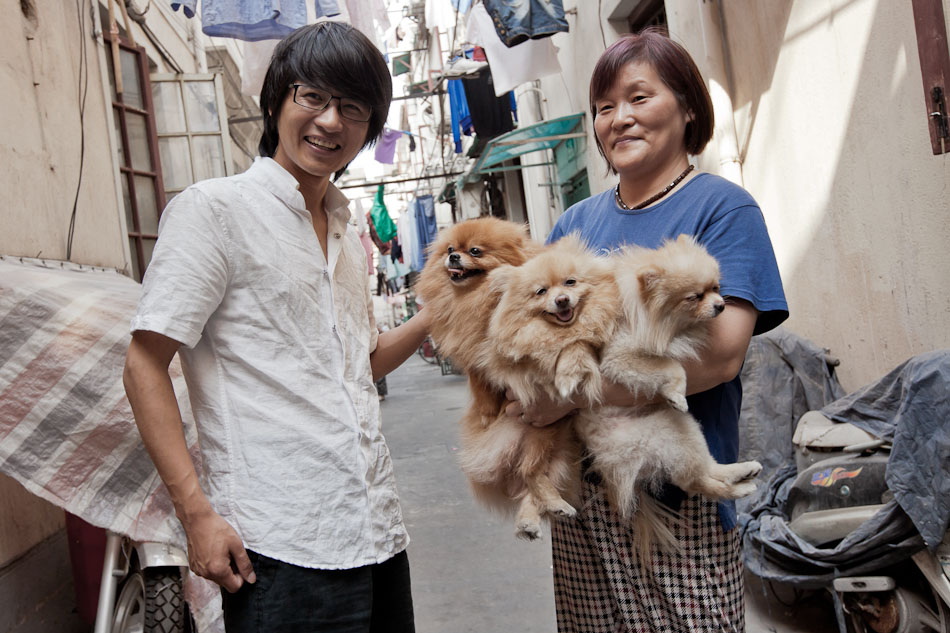Dec 18, 2011 | Clippings, Counterfeit Paradises
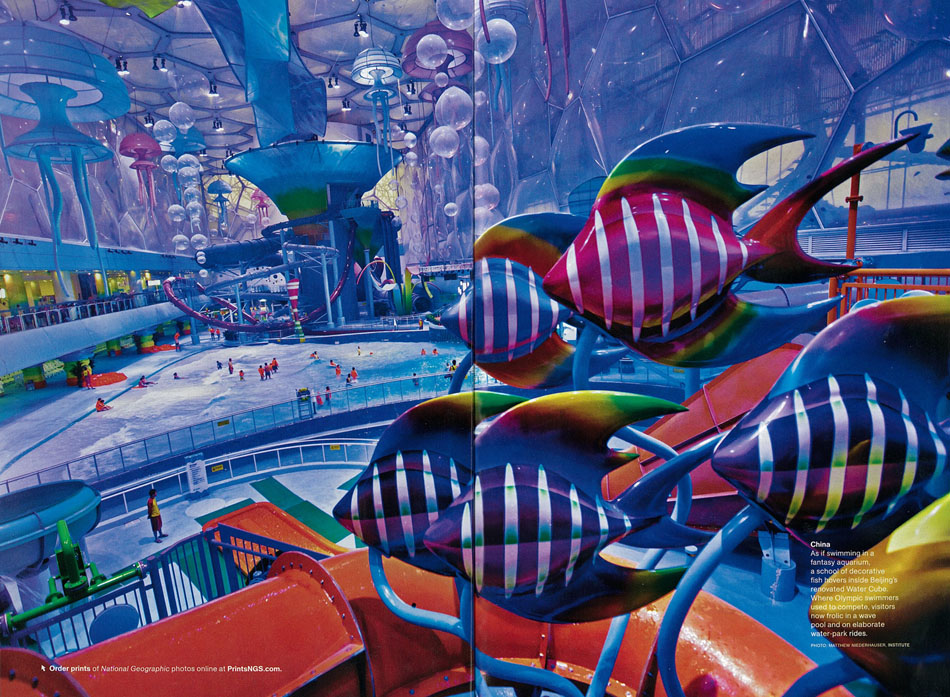
It is with great pleasure to announce that a photograph from the Happy Magic Water Park series is in this month’s issue of National Geographic. I have been meeting with editors at the renowned magazine for over a year, and although it’s just a double-page spread, getting into National Geographic was one of those markers I set for myself a long time ago and definitely dreamed about as a kid. Hopefully it will lead to a full feature with them in the future. Also, fellow INSTITUTE photographer Richard Mosse has a spread from his amazing series Infra, which Aperture just published as a monograph. In celebration, I returned to my Happy Magic Water Park material and pulled out some photographs that I have never shown before. Check them out below.
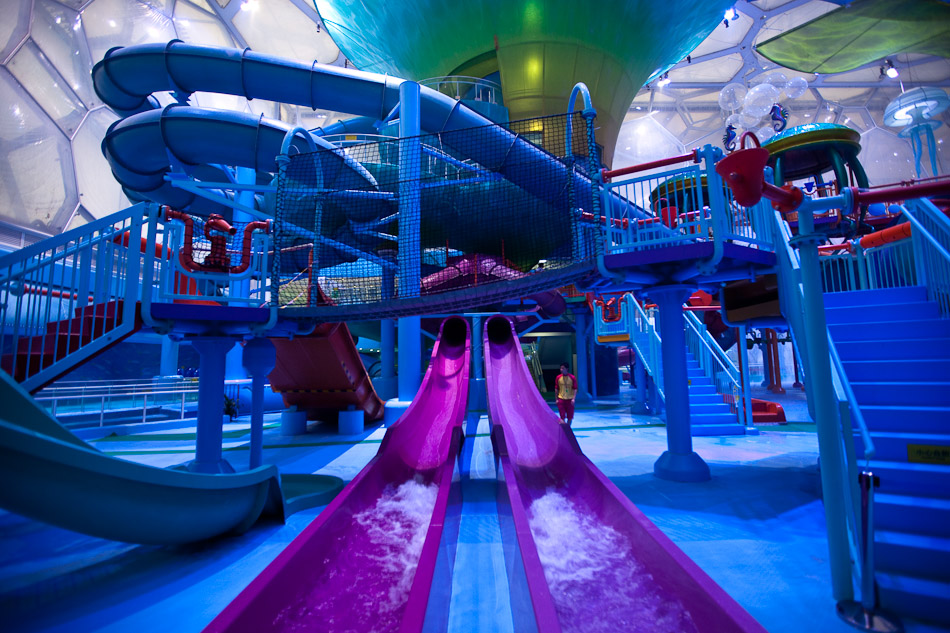
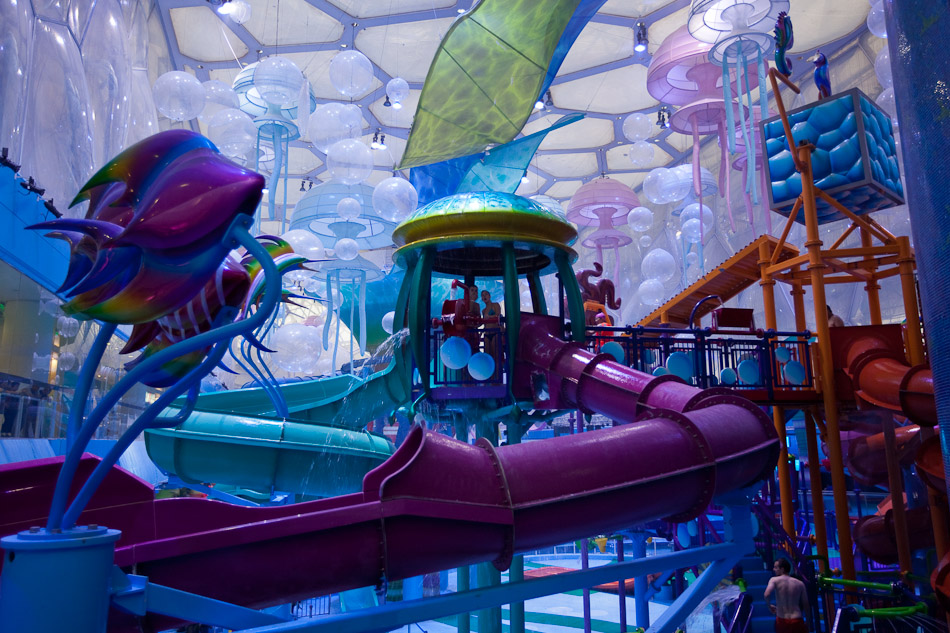


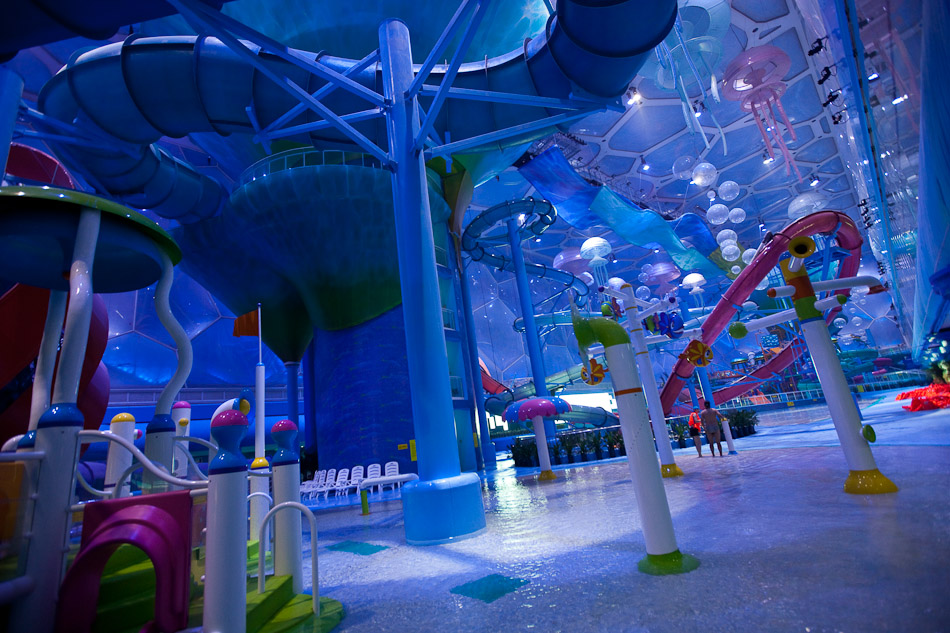
Dec 2, 2011 | Clippings, Portraits
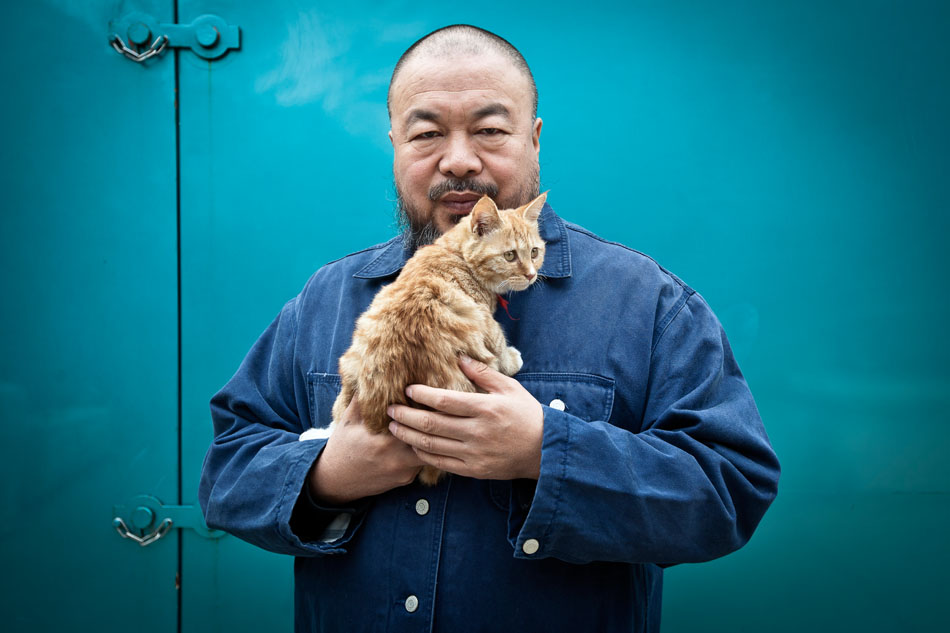
A few weeks ago I had the pleasure of visiting Ai Weiwei in his studio to take portraits for Foreign Policy’s Top 100 Global Thinkers list where he appeared at #18 in the rankings. He was very amiable and open to me directing him about his compound where I posed him with some of his favorite cats. Ai Weiwei is all over the news again. After a short period of silence following an 81-day incarceration, he continues to lash out at authorities and decry the trumped-up charges of tax evasion brought against him in an attempt to silence his outspoken criticisms. A recent Newsweek piece he penned where he related Beijing to a “nightmare” was especially noteworthy. This renewed vigor and boldness seem in large part due to the outpouring of support shown by anonymous Chinese donors who rallied behind him to raise $1.4 million to challenge his huge tax bill which he refers to as ransom money. Other admirers are finding more brazen outlets to show support by posting nude photos of themselves online in defense of other spurious pornography charges brought against Ai Weiwei for a set of revealing self portraits released on the Internet. To make things even more controversial, high profile figures are weighing in on the situation, including Taiwan’s president Ma Ying-jeou who visited his current exhibition at the Taipei Fine Arts Museum. It’s all quite a mess, but I am sure Ai Weiwei is pleased with himself for creating an even larger fuss than before his arrest – another great case of censorship backfiring in the face of the Chinese state.
In a crazy sense I think the political space in China has truly transformed Ai Weiwei’s life into an interdisciplinary work of art or a “social performance” as he calls it. His invocation of the Chinese state’s ire came through a combination of critical sculptures, writings, photographs, videos and installations. While these separate pieces might not be interdisciplinary in nature, they have brought about a dynamic where every action or utterance of Ai Weiwei becomes performative in nature and open to intense analysis by journalists, officials, police and, increasingly so, the general public. His identity remains at the center and activates all of these mediums of expression, especially through the Internet which exponentially magnifies his impact. In a statistical sense, Ai Weiwei is not well known in China. Still, he is making waves where it counts and China’s intelligentsia is taking note. These are the people fashioning the new China, and his stand against censorship and political suppression is singular. By tapping into a populist sentiment with his donation drive, he is putting officials even more on edge. It’s a very crucial moment for Ai Weiwei right now. There is still a very distinct possibility he might disappear again.
In other Ai Weiwei news, my friend Alison Klayman’s documentary, Ai Weiwei: Never Sorry, is set to premiere at the Sundance Festival in January. Check out the trailer and her appearance on the Colbert Report. It is very timely and should be a great film.
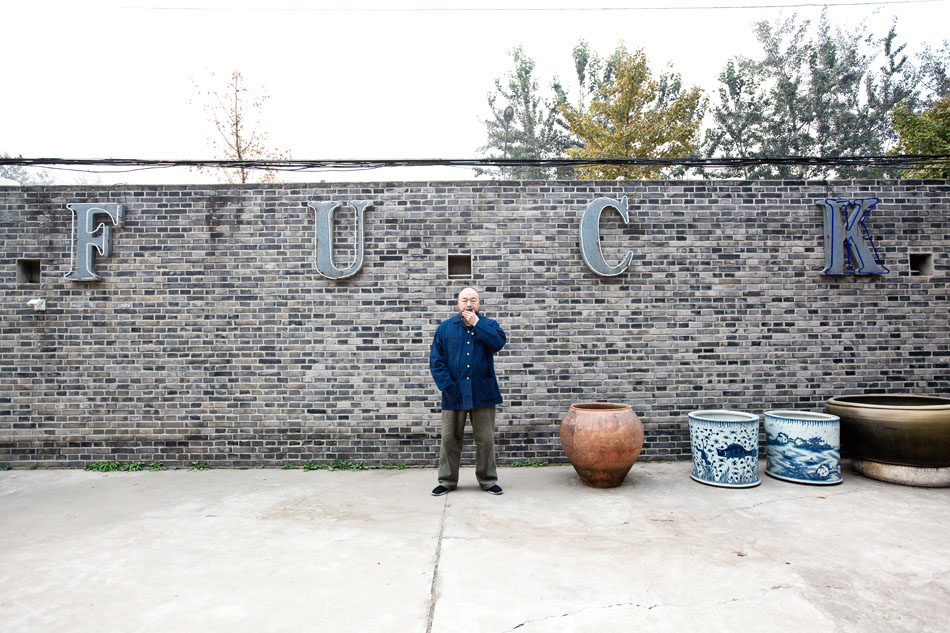
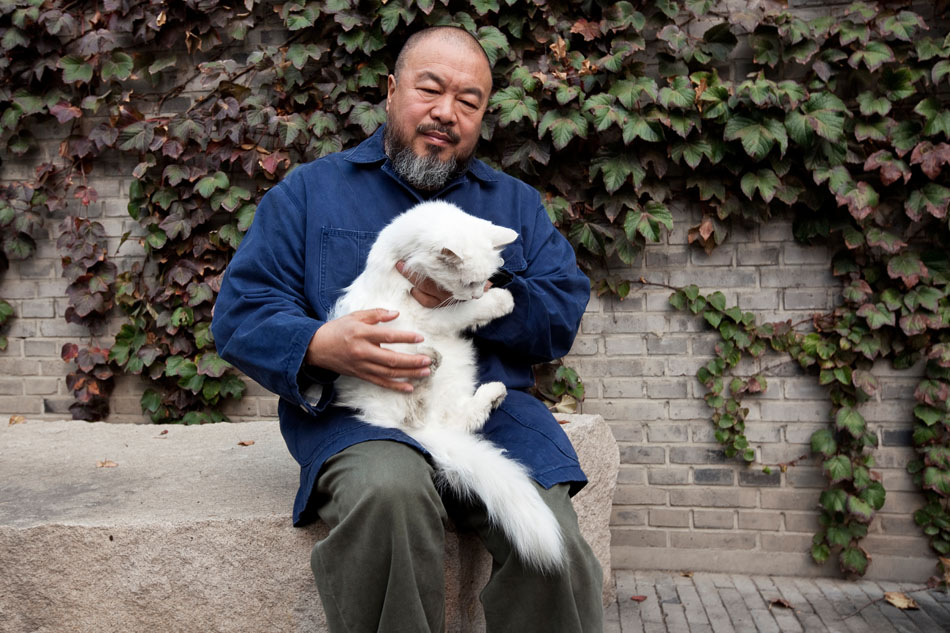
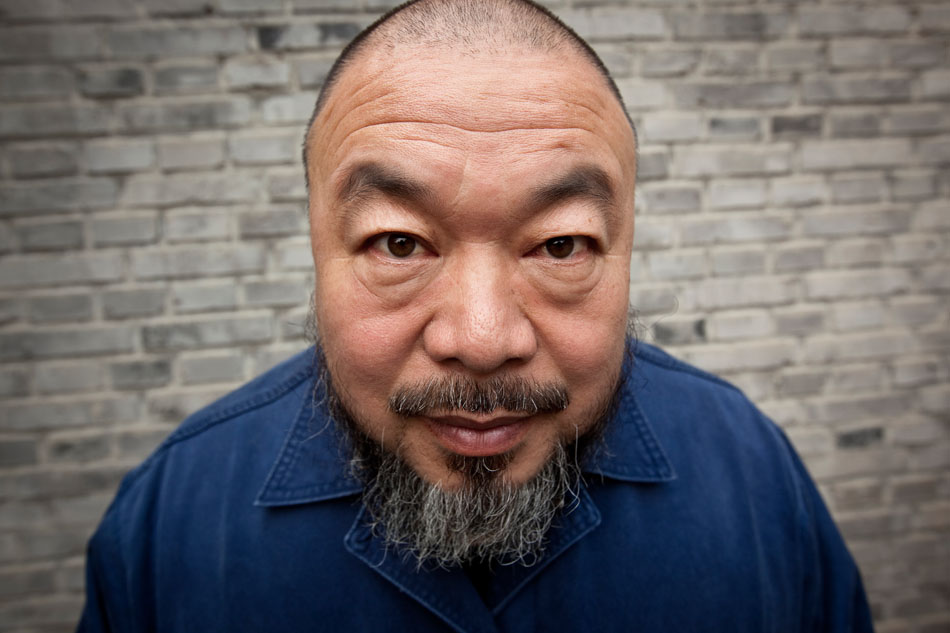
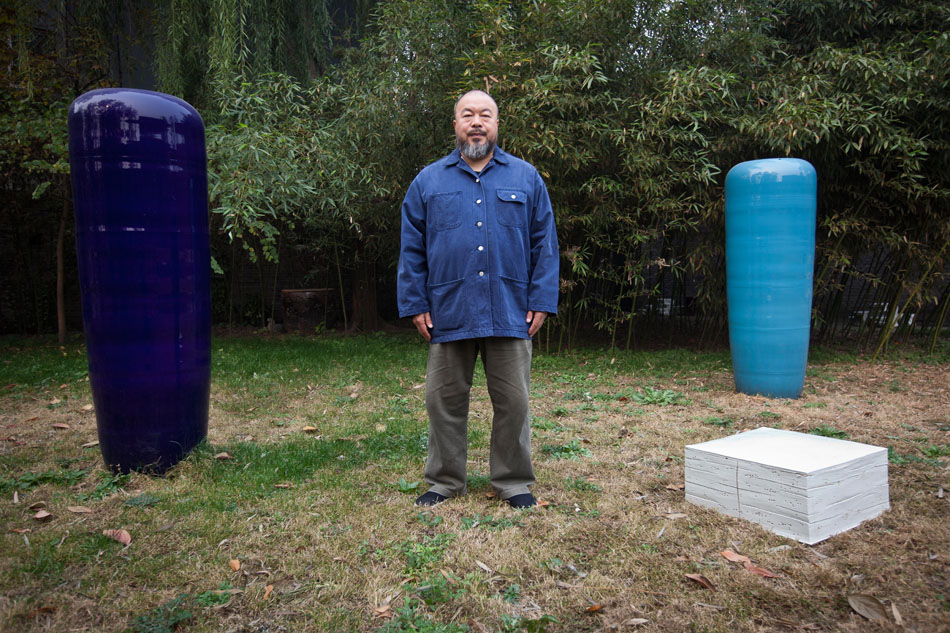
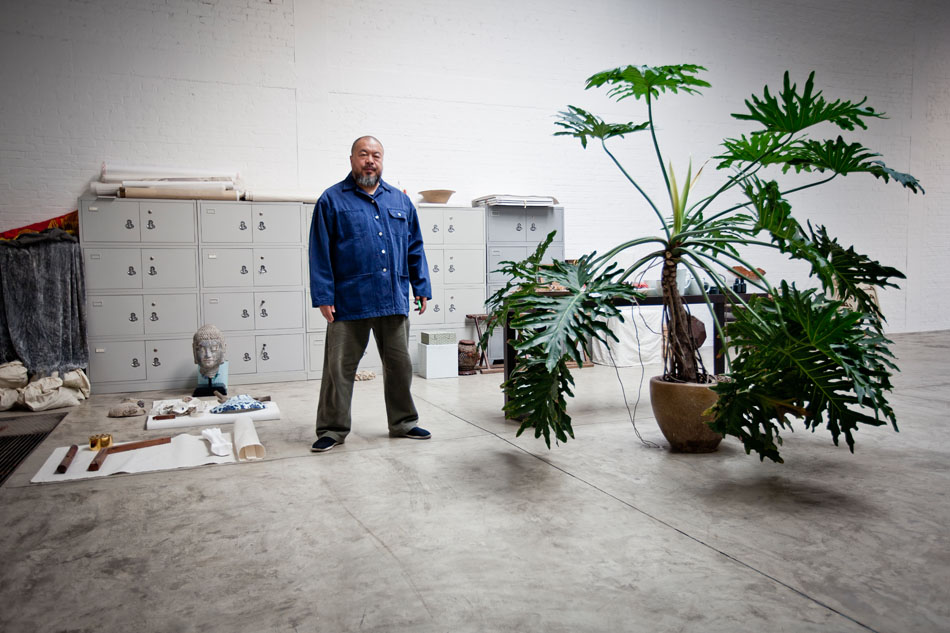
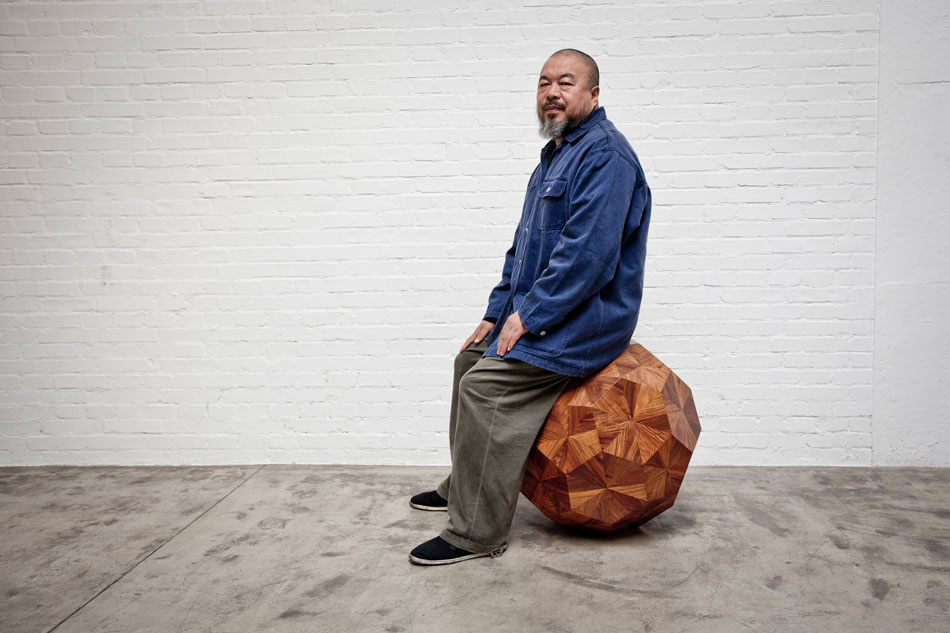
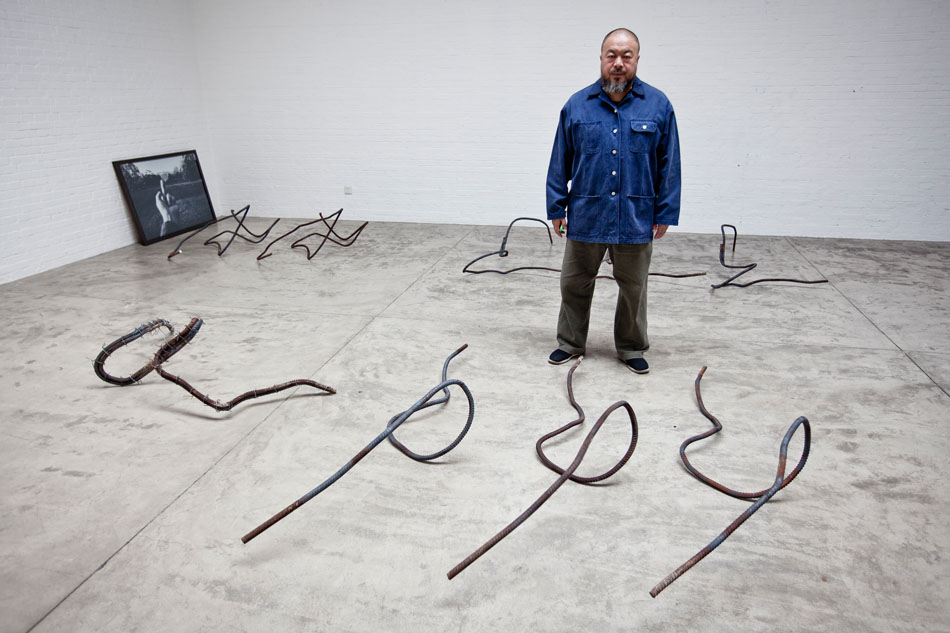
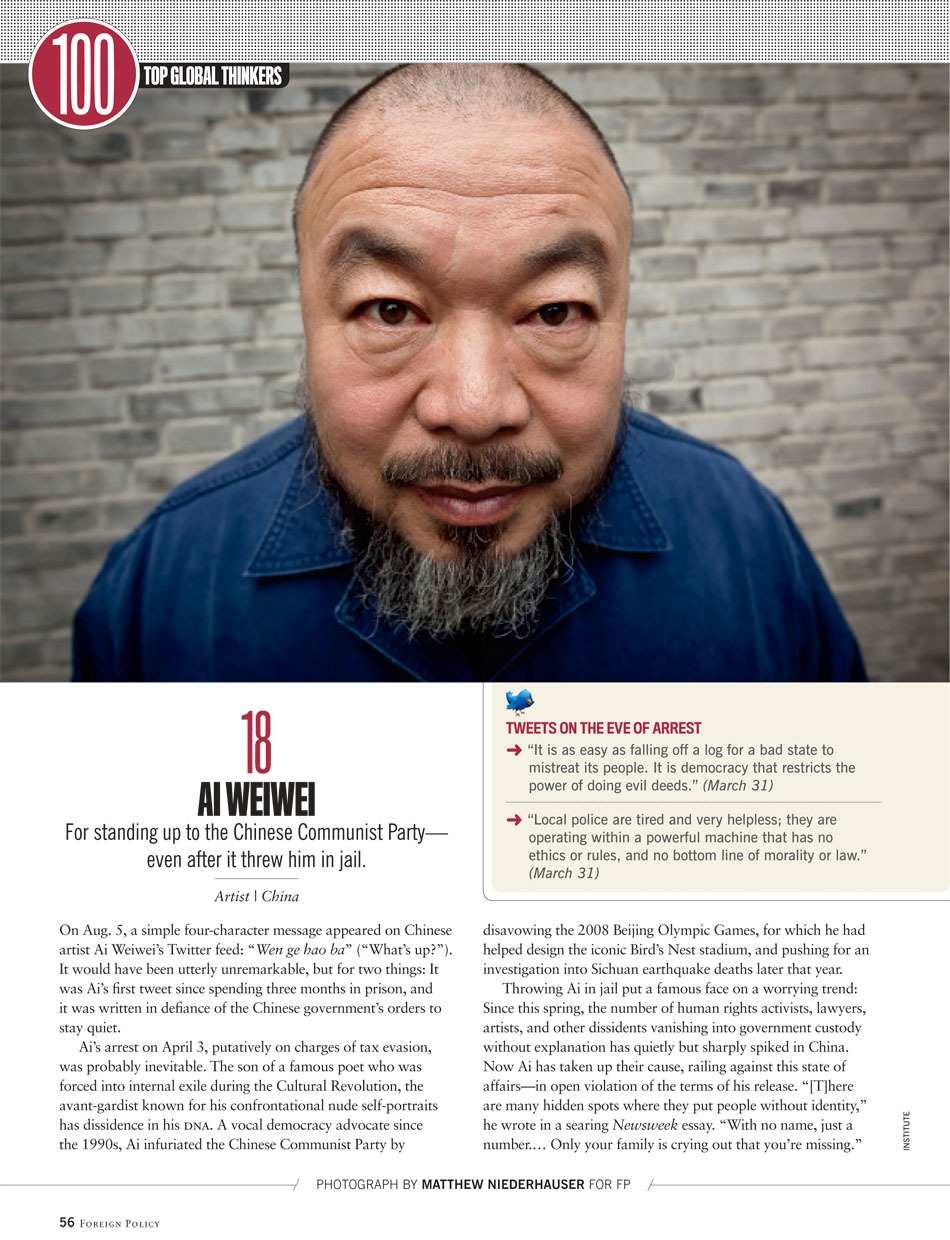
Nov 14, 2011 | Clippings
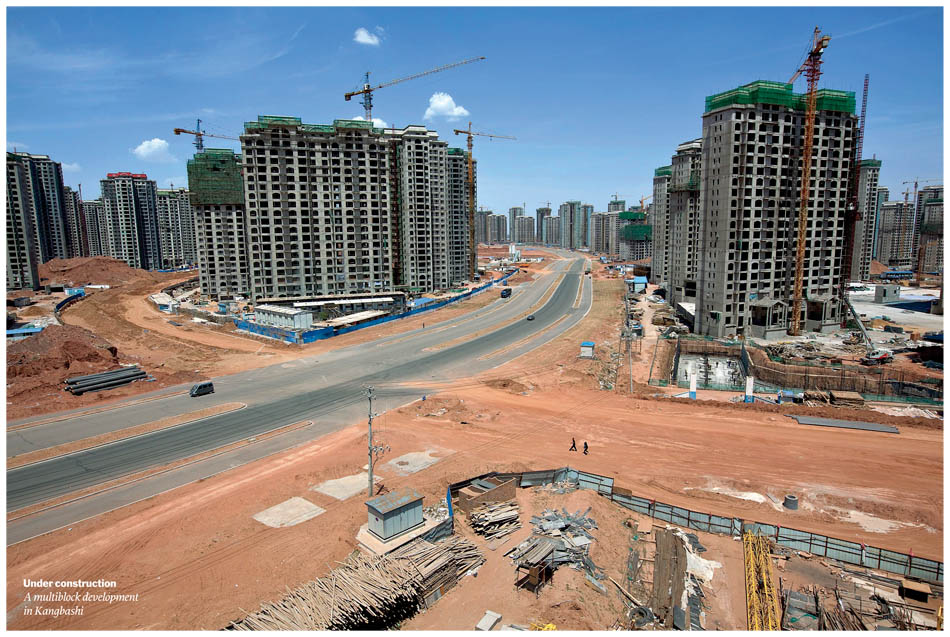
I’m sorry I’m so late with posting these clippings, but I have been traveling a lot recently. Last month Time Magazine featured my photographs from The Ordos Real Estate Bubble: An Empty Chinese Metropolis series in a piece on China’s precarious real estate market. Property prices have been skyrocketing over the past three years thanks to mass speculation by developers and government support of infrastructure development. For some time it was easily one of the best investments in the country and people would camp out on streets in order to buy apartments in especially hot markets in Shanghai and Sanya. Now it seems like the tide is finally going to turn. The real question is whether or not there is going to be a soft or hard landing for property prices. The China real estate sector might be most important financial market in the global economy, and a sudden pop would send international markets into a downward spiral. I don’t think this is going to happen, but people are starting to wake up and realize how overheated housing and commercial markets are in major urban centers. Many of these newfangled luxury developments remain empty and prices are starting to drop. It’s going to be interesting to see how this story unfolds over the next few months.
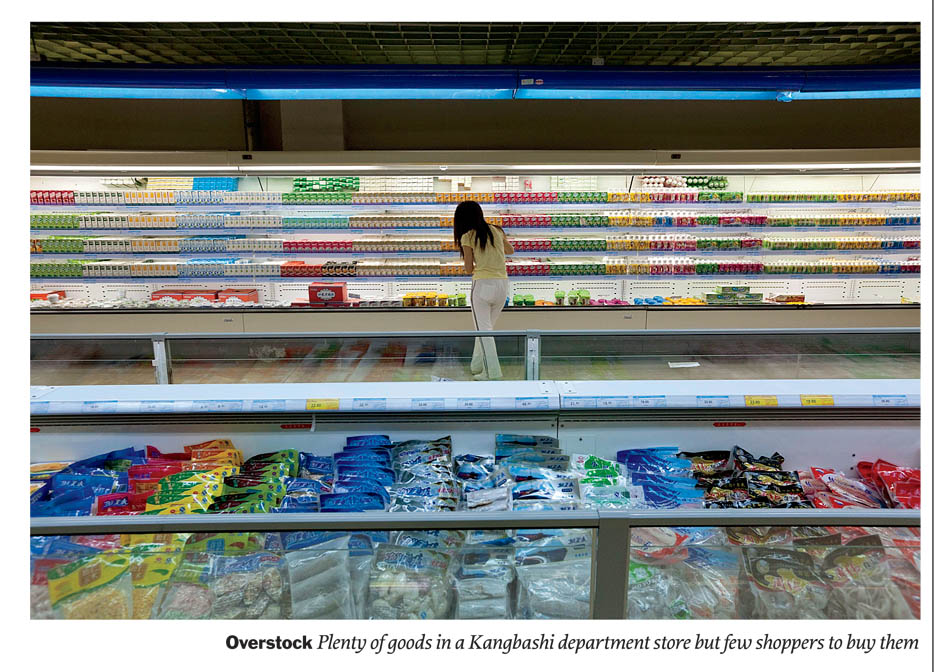
Sep 25, 2011 | Clippings
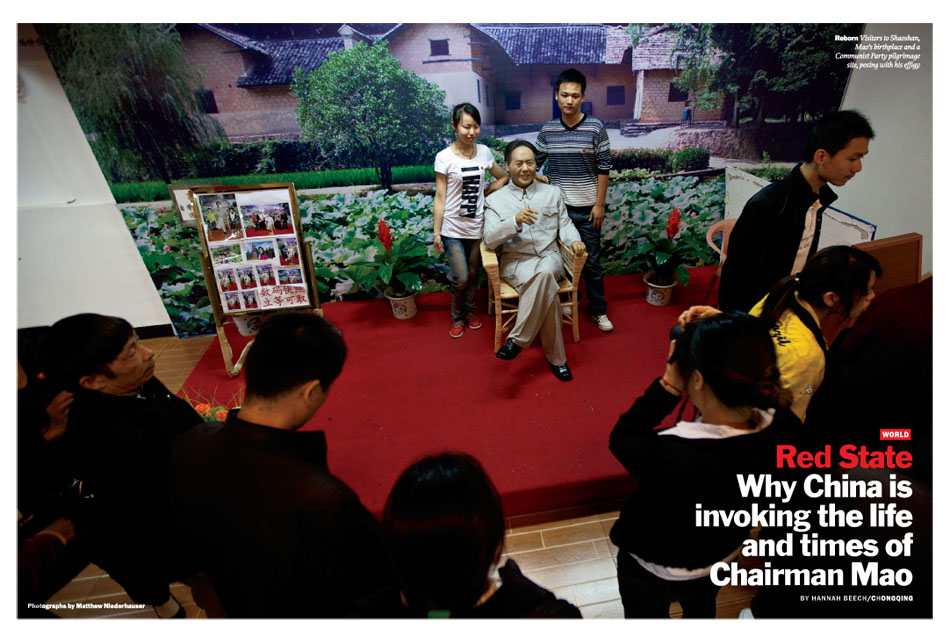
I am definitely late in publicizing this, but Time Magazine used a bunch of photographs from my Red China Rising series in a recent article on red culture and Maoist thought promotion in China for the 90th anniversary of the Chinese Communist Party. The foreign and domestic media frenzy surrounding the promotion of red songs and Mao quotes seems to have subsided now, but it certainly doesn’t mean old people won’t keep gathering in public parks to belt out “The East is Red” and other Cultural Revolution favorites. The whole campaign sort of turned into a joke by the end, and certainly never really caught on amongst the youth. The only real impact I could see is that couples dressing up for cheesy romantic portait sessions now like to don People’s Liberation Army garb covered in red stars. Intentional irony or not, march on!
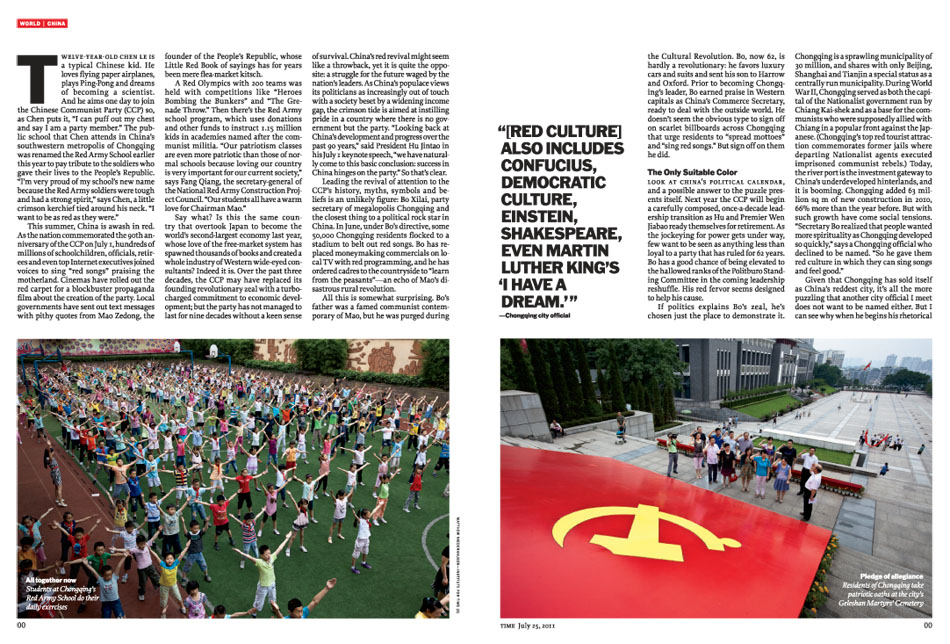
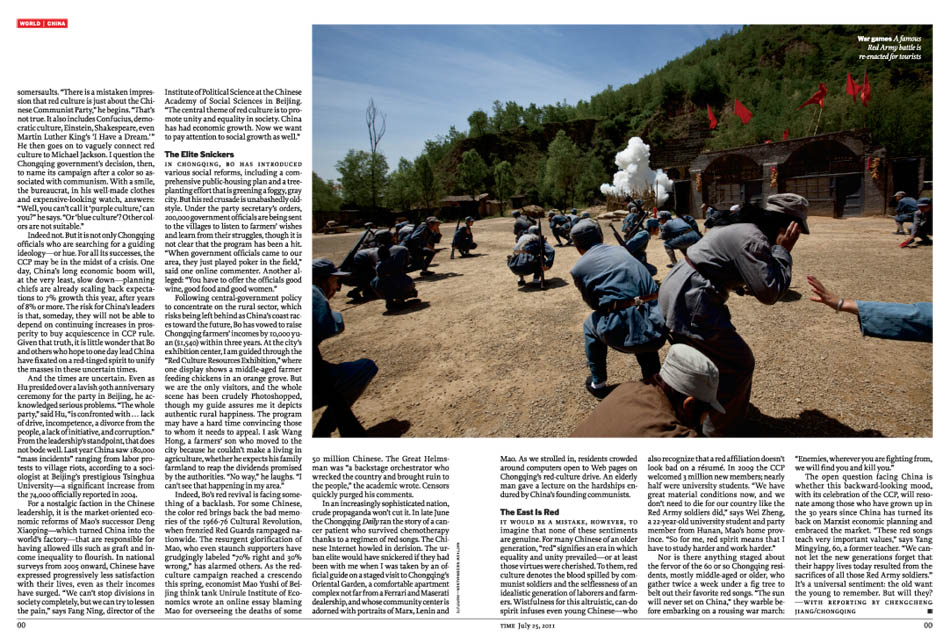
Jul 24, 2011 | Clippings, Portraits
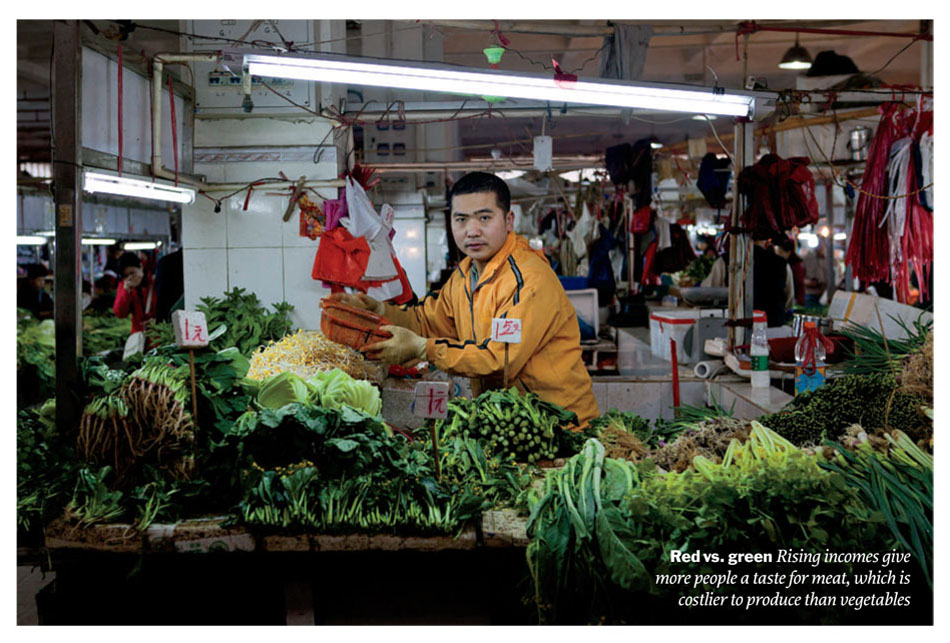
One of my first assignments for Time Magazine is finally in print. I spent a few days in Guangzhou earlier this year shooting formal portraits of vegetable stall owners for an article on rising global food prices. A combination of natural disasters and inflation continues to create a spike in food prices across China. Affordable basic necessities such as electricity, food, water and transportation are always a mainstay of the Chinese Communist Party, but these increases seem to be beyond their control. Consumption of food across China is rising dramatically in line with increased wealth in both rural in urban areas. Everyone wants pork and extra rice at dinner. Many of the figures in the article are actually quite alarming. Global food prices already increased 39% over the past year, food production must increase 70% by 2050 to meet the demand of swelling populations and the average amount of meat people consume has doubled over the past three decades. Despite our profound ability to manipulate our environment, we are going to have to rectify many of our eating habits, not only to combat increased food demand, but also to stave off the rising spectre of obesity. Still, I am going to have my fill of tacos while I am in New York City this month.
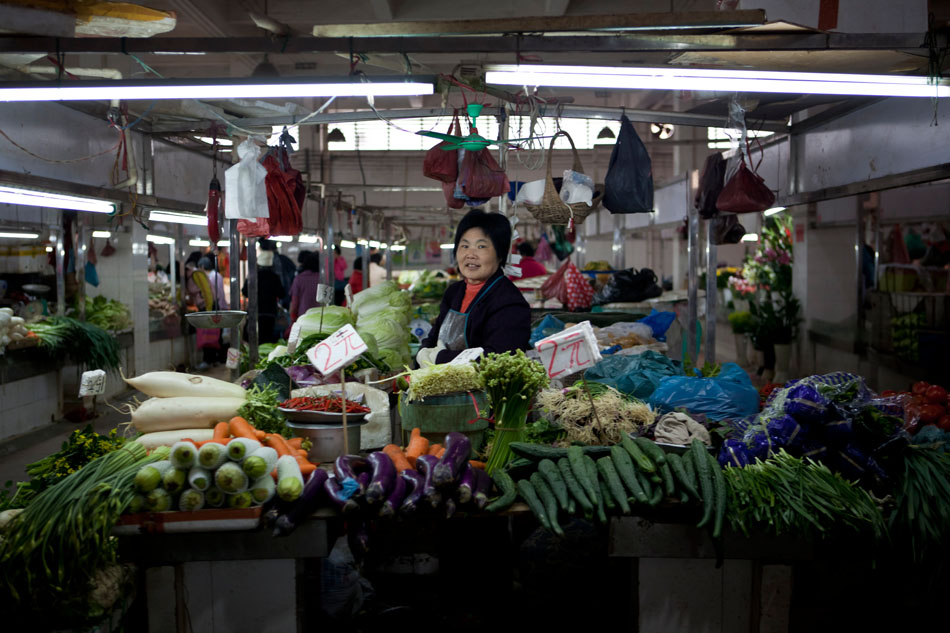

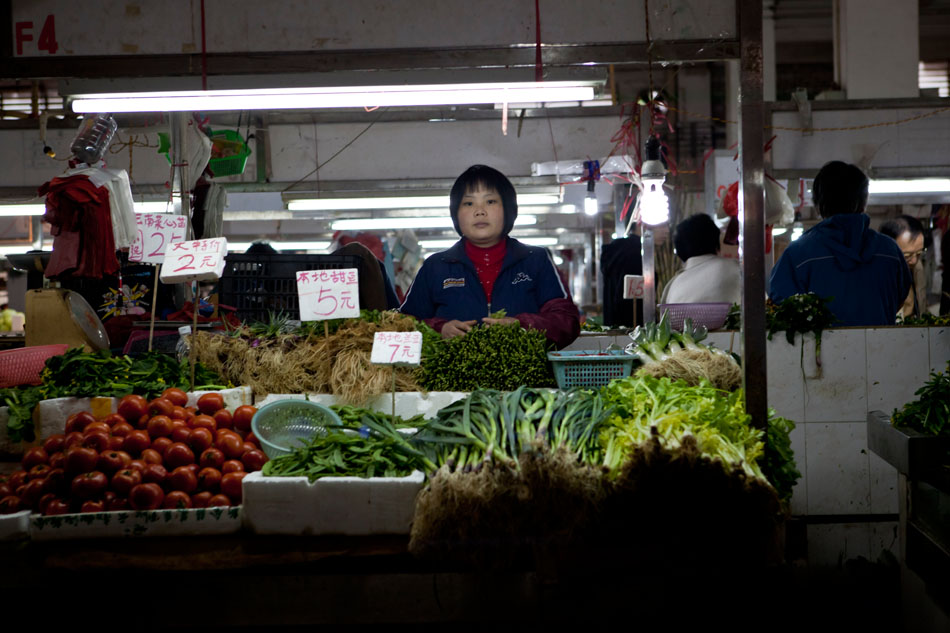
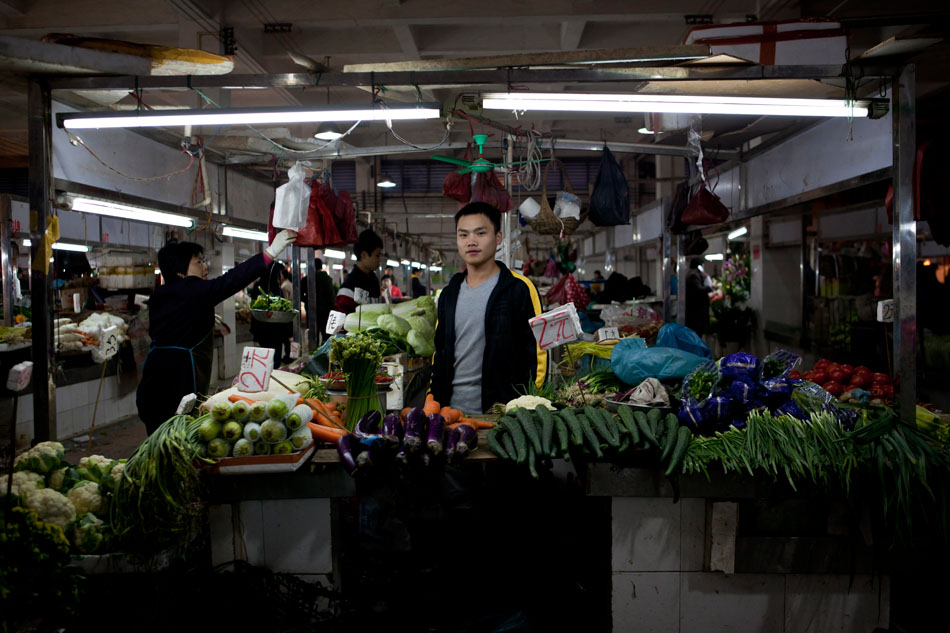
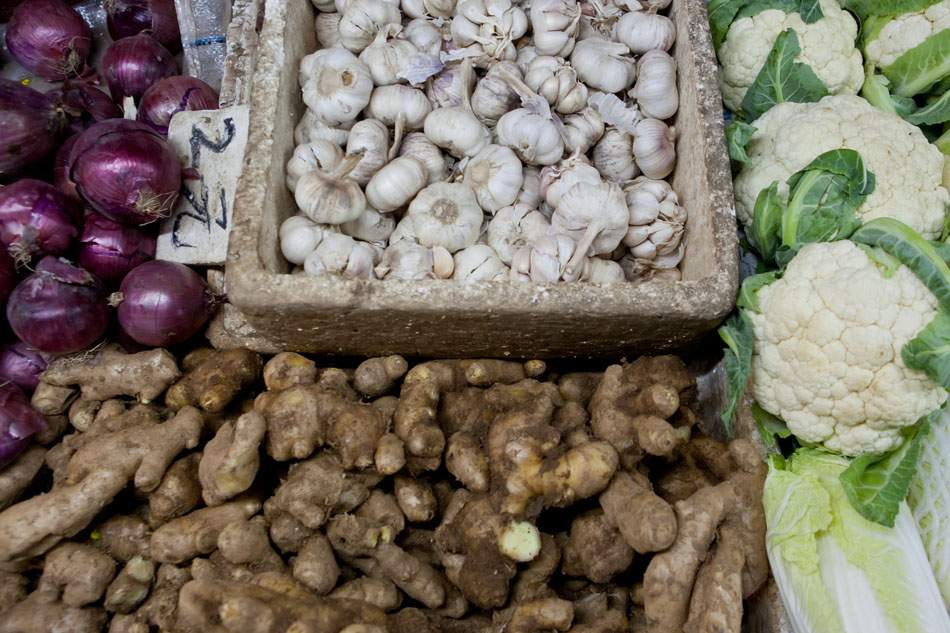
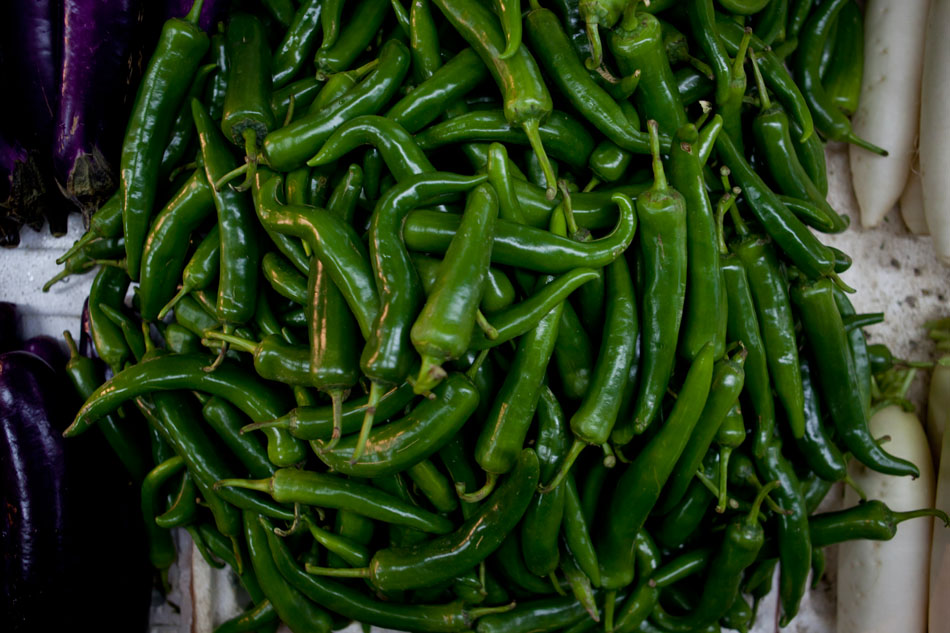
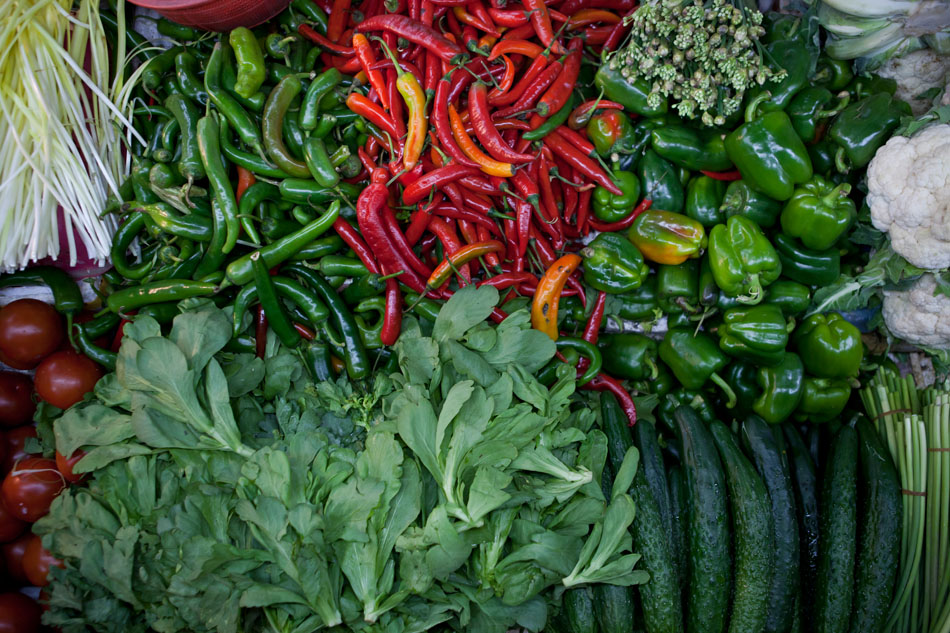
Jul 2, 2011 | Clippings, Portraits
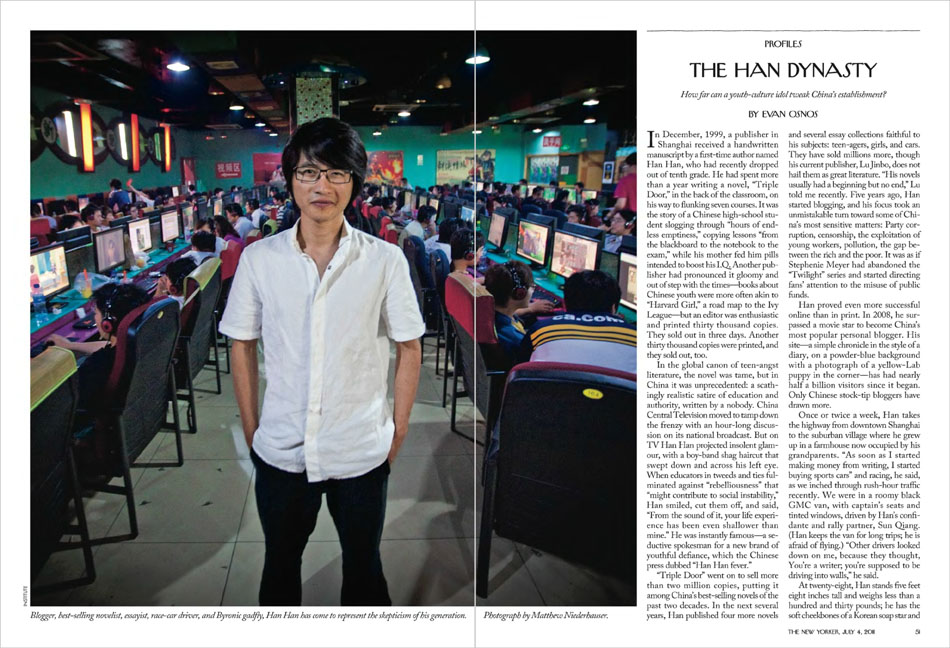
Han Han/韩寒 is China’s bad boy blogger, pop star, race car driver, lady killer and political-dissident-dabbler extraordinaire. His personal blog has garnered upwards to half a billion hits, and he ranked second in the 2010 Time 100 Poll for the most influential people in the world (granted there was a viral movement in China to boost his rankings). This week Evan Osnos profiled him in The New Yorker and my portrait accompanied the piece (there is a paywall, but Evan posted two related blog entries). Photographing Han Han in Shanghai was surreal. I think he is inured to contrived studio locations so he seemed a bit surprised when I met him on the street and started dragging him around to dirty internet cafes just off the Bund. Still, Han Han went with the flow and fully cooperated despite the ad hoc nature of the shoot. Quite frankly he is really easygoing and always down for a joke. A few people recognized him on the street and at the last Internet cafe we visited where I shot the published portrait, the manager flipped out that Han Han was present and allowed us to do whatever we wanted. Still, his popularity is a double-edged sword. Some people were scared to let them into their establishments while others couldn’t believe their luck.
After shooting Han Han in Shanghai I got to meet up with him one more afternoon at the Zhuhai International Raceway, just outside Macau. He was in full race mode. Bantering with the other drivers and strutting in and out of the pit, Han Han seemed at ease in the air conditioned confines of his sponsor tent. I feel Han Han is actually rather crowd averse. He mentioned that he was working on a new book, but otherwise seemed a bit resigned to his current daily routine – keeping things subdued ever since the crackdown on other outspoken activists around China. There is a boyish air to Han Han, and he is just as pleased to hone his skills behind the wheel instead of injecting caustic commentary into the Chinese zeitgeist. Despite the whirlwind of cars and speculation, Han Han is in no rush and has plenty of time to devise his machinations.
